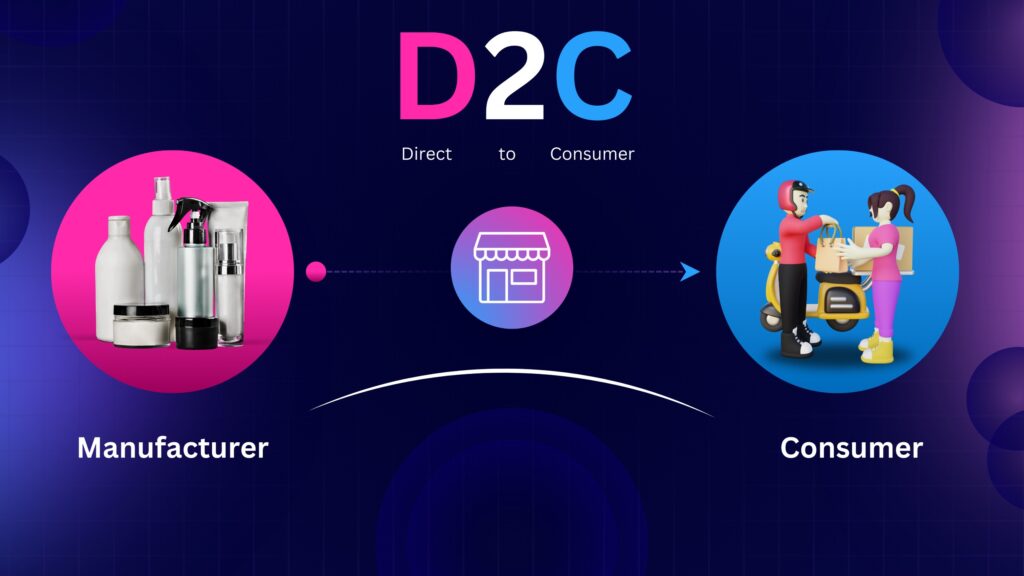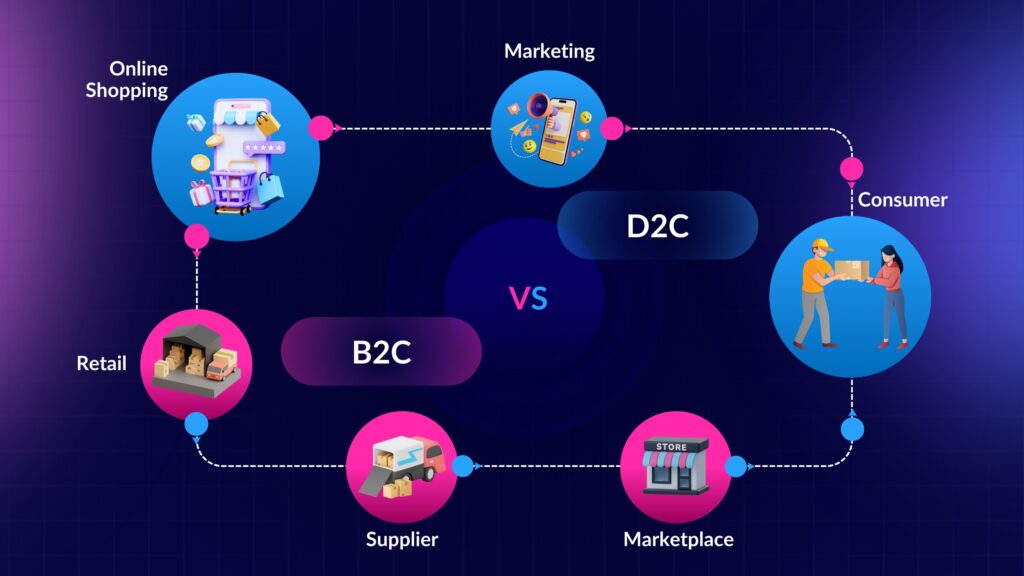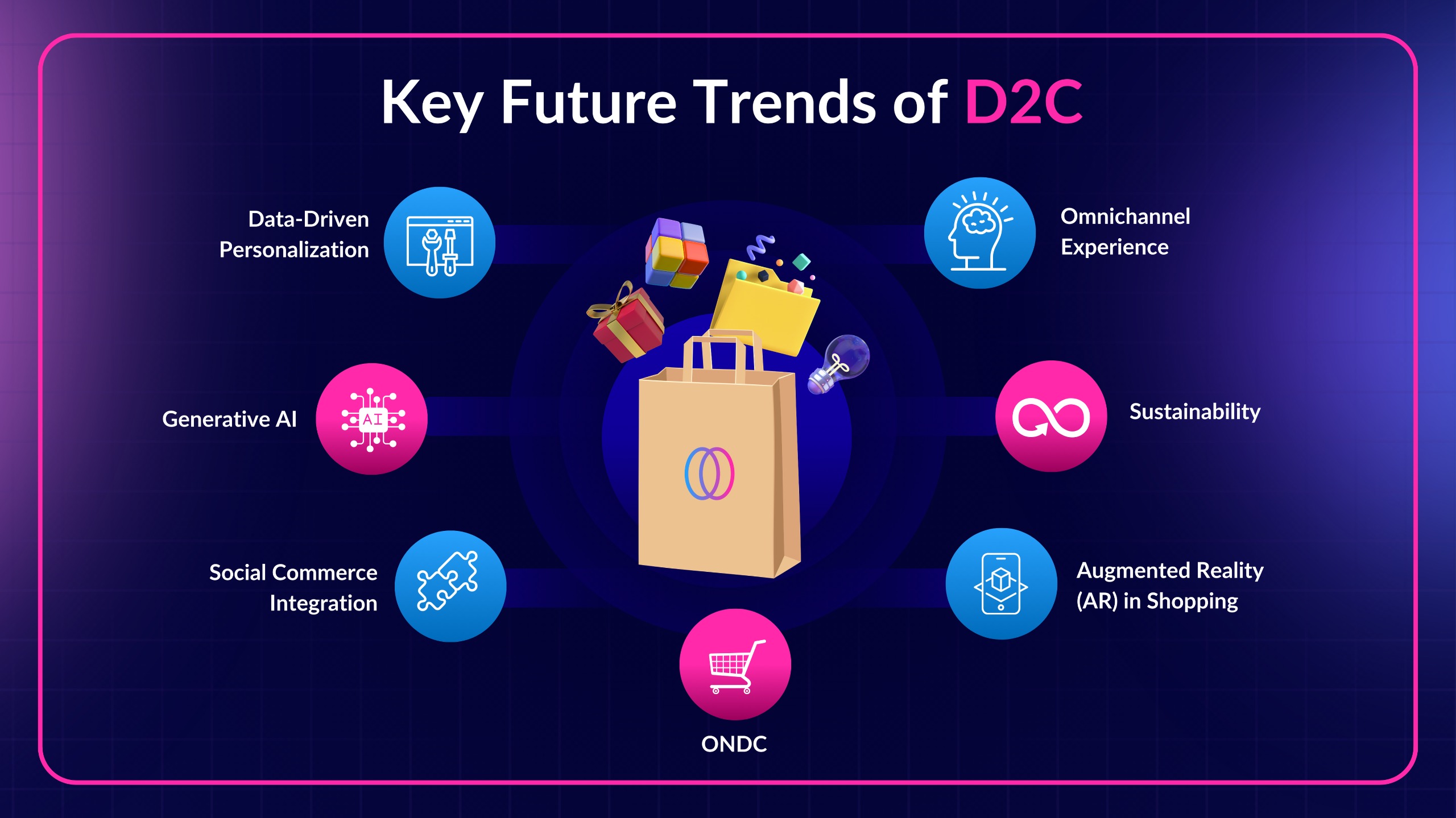The great Indian D2C market is expected to touch $61.3Billion USD by 2027, growing at 38% CAGR; a figure that is nothing short of revolutionary. The traditional retail model characterized by intermediaries and middlemen, has eventually given way to a more direct approach, allowing brands to establish a one-to-one connection with consumers.
This shift has accelerated in recent years, reshaping the way businesses operate and consumers shop. In this article, we delve into the journey of D2C markets in India, exploring their evolution, challenges, and transformative impact on both businesses and consumers.
The Genesis Of D2c Market In India

Source: Inc42.com
The roots of D2C in India can be traced back to the launch of the iconic washing powder brand ‘Nirma’ in 1969, by Karsanbhai Patel. The trend caught momentum however, in the early 2000s when forward-thinking entrepreneurs like Titan, Amul, Mama Earth and Carat Lane, recognized the potential of establishing a direct connection with consumers.
They took the initial steps, bypassing traditional distribution channels to reach customers directly which marked the beginning of a paradigm shift in the Indian market.The advent of the internet and e-commerce platforms played a pivotal role in the evolution of D2C markets. With the rise of online shopping, businesses found a new avenue to connect directly with consumers, eliminating the need for physical shopfronts.
This shift was fueled by increasing internet penetration and the growing comfort of Indian consumers with online transactions.
The Rise Of Digital Natives And Startups
As the digital landscape matured, a wave of startups emerged, fueled by innovative Indian business models. Companies like Nykaa, Lenskart, and Zivame disrupted traditional sectors like beauty, eyewear, and lingerie by opening up channels for direct to consumers, in India. By focusing on niche markets and leveraging the power of e-commerce, these startups gained rapid traction, paving the way for a new era of D2C dominance.
One of the key reasons behind the success of startup D2C brands in India was their consumer-centric approach supported by steady growth in per capita income within the nation. By understanding the evolving needs and preferences of the modern Indian consumer with more disposable income at hand, these companies tailored their products and marketing strategies accordingly. Personalization became a cornerstone of D2C success, allowing brands to forge a deeper connection with their audience.
The success stories of early D2C startups attracted significant attention from investors. A funding boom ensued, providing these companies with the financial backing needed to scale up operations. This influx of capital allowed D2C brands in India to invest in technology, marketing, and supply chain optimization, further solidifying their position in the market.
Overcoming Challenges And Building Trust

FY2024 recorded a significant revenue slump in the domestic D2C market with companies like Minimalist, Zivame, Ustraa and Boat topping the list.
The field of direct-to-consumer, India is fraught with myriad challenges; one of the foremost being the establishment of trust among consumers that are accustomed to the reliability of established retail outlets. In this section, we delve into the strategies employed by D2C players to overcome this challenge and build a foundation of trust.
1. Quality Assurance and Product Trust
To overcome the key challenge of building trust among consumers accustomed to the reliability of established retail outlets, D2C brands in India focused on highlighting the quality of their products, often adopting transparent manufacturing and sourcing practices. Customer reviews and testimonials played a crucial role in building trust and credibility.
2. Last-Mile Delivery and Customer Experience
Efficient last-mile delivery emerged as a critical factor in the success of D2C brands. Companies invested heavily in logistics and technology to ensure timely and reliable delivery. Additionally, a focus on enhancing the overall customer experience, from website navigation to post-purchase support, became a priority. This attention to detail helped D2C brands differentiate themselves in a crowded market.
3. Pricing Strategies and Value Proposition
Competing with traditional retail giants required D2C brands to adopt competitive pricing strategies without compromising on quality. By eliminating intermediary costs, D2C brands could offer products at more affordable prices, creating a compelling value proposition for consumers. Clear communication of this value proposition became crucial in convincing consumers to shift their purchasing behavior.

D2C in the Post-Pandemic Era
Did you know, direct to consumer, India startups received over $5Billion in funding in 520 deals, from the period between 2021 to H1 2024.
As lockdowns and social distancing measures reshaped consumer behavior, the direct-to-consumer (D2C) model emerged as a pivotal force in the Indian market. This section delves into the dynamics of D2C in the post-pandemic era, shedding light on key trends and strategic shifts that have defined the trajectory of this rapidly evolving sector.
1. Acceleration of E-Commerce Adoption
The COVID-19 pandemic acted as a catalyst for the rapid adoption of online shopping in India. With lockdowns and restrictions in place, consumers turned to digital channels for their shopping needs. D2C brands, already well-positioned in the online space, experienced a surge in demand. The pandemic not only accelerated the growth of existing D2C players but also prompted traditional brands to pivot towards direct-to-consumer strategies.
2. Omni-channel Integration
Recognizing the importance of a holistic approach, the post-pandemic D2C market witnessed the rapid adoption of omni-channel strategies. While maintaining a strong online presence, many brands began exploring partnerships with traditional retailers, pop-up stores, and other offline channels. This integration allowed D2C brands to cater to a broader audience while retaining the benefits of a direct connection with consumers.
3. Sustainability and Ethical Practices
A notable shift in consumer preferences towards sustainability and ethical practices has influenced D2C brands to adopt eco-friendly initiatives. From packaging choices to supply chain transparency, brands are incorporating sustainable practices into their core business models. This shift aligns with the values of the modern Indian consumer, contributing to the long-term success and credibility of D2C brands.
Future Trends and Innovations in the D2C Sector

In this section, we explore the future trends and innovations that are shaping the D2C sector, propelling it towards new heights of consumer engagement and satisfaction.
These trends showcase how the amalgamation of technology and consumer-centric strategies is set to revolutionize the way brands interact with their audience and facilitate seamless transactions.
1. Data-Driven Personalization
The future of D2C in India is poised to be heavily influenced by data-driven personalization. With the abundance of consumer data, D2C brands in India are expected to leverage artificial intelligence and machine learning to tailor products and marketing messages on an individual level. This hyper-personalization aims to enhance customer satisfaction and loyalty.
2. Augmented Reality (AR) in Shopping
Innovations like augmented reality are set to redefine the online shopping experience. D2C brands are increasingly integrating AR features into their websites and apps, allowing consumers to virtually try products before making a purchase. This not only enhances the overall shopping experience but also reduces the likelihood of returns, a common challenge in the e-commerce sector.
3. Social Commerce Integration
The convergence of social media and e-commerce is becoming more defined, and D2C brands are capitalizing on this trend. Social commerce, where consumers can discover and purchase products directly through social media platforms, is gaining traction. D2C brands are aligning their strategies to leverage the reach and engagement potential of platforms like Instagram, Facebook, and WhatsApp.
Evolution of Direct-to-Consumer (D2C) Markets in India

The evolution of Direct-to-Consumer markets in India has been a transformative journey, reshaping the dynamics of commerce in the country. From the early pioneers to the digital natives and the challenges overcome, D2C has emerged as a force to be reckoned with. The post-pandemic era has only accelerated this shift, pushing direct to consumer brands to innovate, integrate, and align with evolving consumer values.
As we look ahead, the future of D2C market in India holds exciting possibilities, with data-driven personalization, augmented reality, and social commerce poised to redefine the landscape. The story of D2C in this nation is one of adaptability, innovation, and a direct connection with the evolving needs of the Indian consumer.
Ready to revolutionize your brand’s journey in the evolving landscape of Direct-to-Consumer commerce? Unlock the power of data-driven strategies with OgmentO. Explore the possibilities – connect with OgmentO today and reshape your D2C success story.

